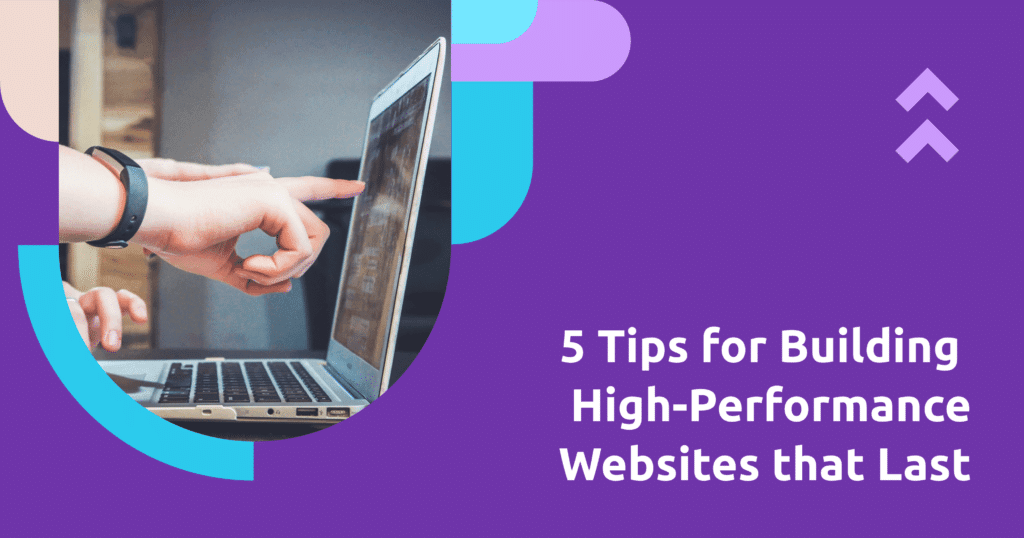
Having a website should be a given for any company. And in today’s fast-paced, digital world, putting up a website for the sake of having an online presence is not enough. You should build a hard-working website that will help you meet your business needs. If you want to stand out from other companies, then building a high-performing website should be on your priority list.
It’s essential to have a website that performs well, and we know that building or improving your website is a daunting task.
But don’t worry, we’ve got some tips on how you can build your own high-performance website:
- Create a well-designed website
- Improve site performance
- Conduct regular check-ups
- Create engaging and relevant content
- Enforce cybersecurity measures
(Reading time: 3 minutes)
1) Create a well-designed website
Your website creates a first impression for your company. A well-designed user interface shows that you took the time to understand the user journey and integrated those insights into the design of your website, from the navigation to the calls-to-action. You should aim to create a user-friendly website that’s accessible to all types of customers and various devices, whether via mobile phone, tablet, laptop, or desktop PC. We’ve listed below some key factors that you should consider when planning your website’s design:
- Target audience
- Site Purpose
- User journey
- Competitor check
- Web development budget
A well-designed website serves its purpose (depending on your preferred call to action), is easy to navigate, and is aesthetically pleasing. Performing well in terms of both form and function will make your audience want to continue exploring your site.
2) Improve site performance
Whether in a queue or in front of a loading webpage, customers will choose not to wait if at all possible. To stop visitors from abandoning your site, make sure your website’s speed is optimized. Shorter loading times will improve customer experience and lead to more conversions for your business. Here are some ways to help optimize your website’s speed:
- Compress images and videos without compromising quality
- Cache your web pages for faster loading
- Enable asynchronous loading
- Delete unnecessary plugins and eliminate redundant media
3) Conduct regular check-ups
Consistently reviewing performance and setup is key to maintaining a high-performing website. You should regularly check for slow performance or errors and fix issues accordingly. Enforce code reviews to identify bugs and provide solutions to any gaps. Technology and user behavior are ever-changing, so never stop testing your website to stay ahead. Here are some of the common errors to look out for during a check-up:
- HTTP errors like 404 (Not Found) or 500 (Internal Server Error)
- Missing ALT text for user accessibility and SEO
- Long loading time: This can stem from multiple factors like coding, unnecessary media, and more.
- Outdated content or technology
- Poor user experience
4) Create engaging and relevant content
While it’s tempting to just highlight calls-to-action that lead to check-out, you should avoid making the website look too transactional. Provide content that’s more than a hard-sell pitch in digital form. Having great content not only helps increase brand awareness and improve search rankings; it also offers relevant resources to your target audience. Here are some items you should include in your website content plan:
- Blogs: Articles can come from your internal content team or from guest writers. Well thought out blogs provide legitimacy and further your brand messaging.
- Resources: These can be in different formats, like e-books or videos. You add value to your visitors by not just offering your products and services but also by providing helpful resources.
- Client Testimonials: Reviews like these are a good way to showcase what your company has done from the point of view of a customer.
A website should not only look great, but also offer relevant and engaging content to its visitors. Make sure that every type of content is reviewed before publishing to maintain the high quality of your content and your company’s reputation.
5) Enforce cybersecurity measures
Modern technology has provided companies with great opportunities and new ways to do business. However, it also exposes companies and individuals to unseen threats. Doing business online without security measures in place is dangerous and puts your business and clients at risk. When you effectively set up or improve your website security, you can save valuable time and money. Protecting yourself against cyber breaches means:
- Eliminating operational disruptions
- Avoiding potential revenue loss caused by disruptions
- Ensuring company reputation is kept safe
- Avoiding spending resources on rebuilding systems and recovering lost data
Make sure that your great web design, structure, and content don’t go to waste. Invest in cybersecurity practices to ensure both corporate and client data are protected.
Nowadays, it’s becoming more evident that more and more consumers are going digital. While it’s important to have an online presence, it’s even more important to make sure that you don’t get lost in the crowd of companies vying for the audience’s attention. Investing time in integrating these tips can help you build a high-performing and lasting website that will set you apart from the competition. If you need additional expert help with improving your website, consider consulting with a technology expert. Cansulta’s technology experts can help you stay ahead with not just a high-performing website, but a complete digital strategy.
